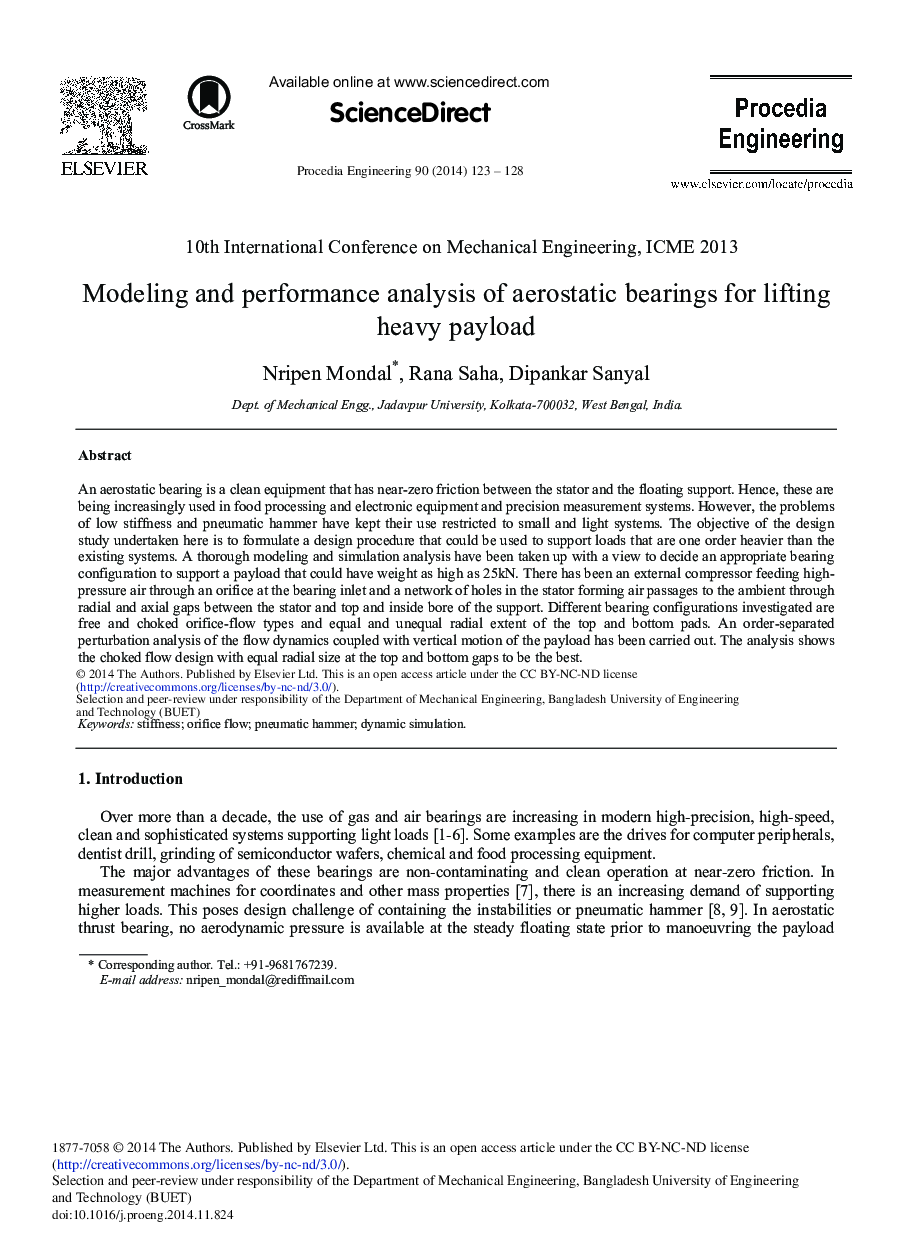| Article ID | Journal | Published Year | Pages | File Type |
|---|---|---|---|---|
| 857277 | Procedia Engineering | 2014 | 6 Pages |
An aerostatic bearing is a clean equipment that has near-zero friction between the stator and the floating support. Hence, these are being increasingly used in food processing and electronic equipment and precision measurement systems. However, the problems of low stiffness and pneumatic hammer have kept their use restricted to small and light systems. The objective of the design study undertaken here is to formulate a design procedure that could be used to support loads that are one order heavier than the existing systems. A thorough modeling and simulation analysis have been taken up with a view to decide an appropriate bearing configuration to support a payload that could have weight as high as 25 kN. There has been an external compressor feeding high-pressure air through an orifice at the bearing inlet and a network of holes in the stator forming air passages to the ambient through radial and axial gaps between the stator and top and inside bore of the support. Different bearing configurations investigated are free and choked orifice-flow types and equal and unequal radial extent of the top and bottom pads. An order-separated perturbation analysis of the flow dynamics coupled with vertical motion of the payload has been carried out. The analysis shows the choked flow design with equal radial size at the top and bottom gaps to be the best.
